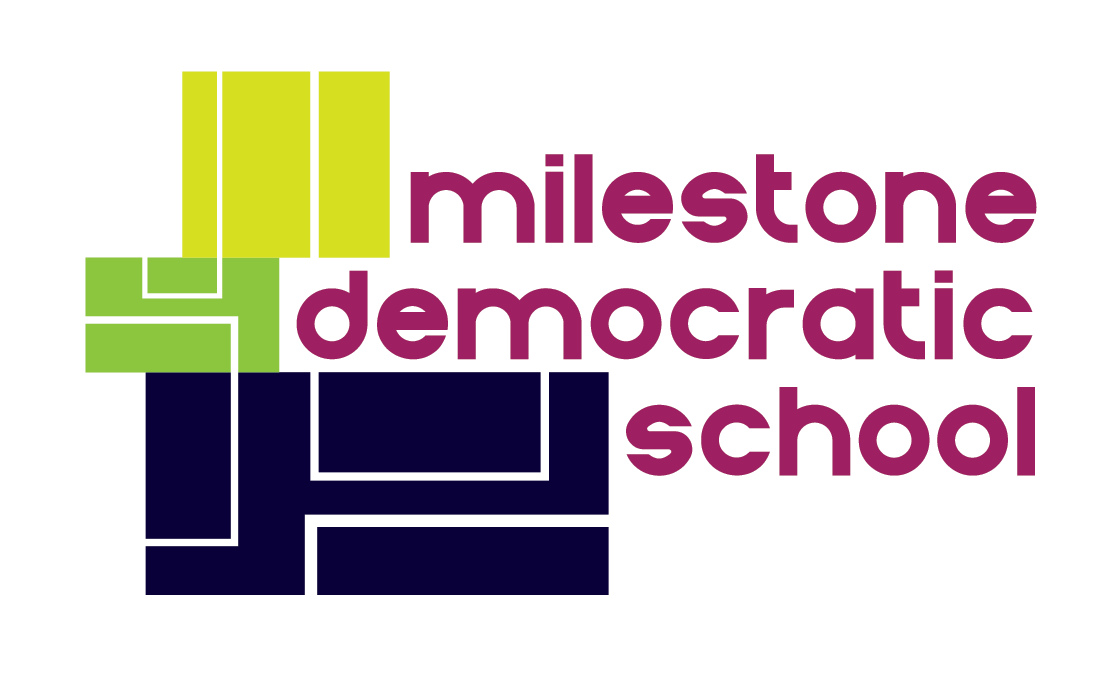| Document ID | Title EC Decision-Making Procedure | Print Date 07/22/22 |
| Revision 2.0 | Prepared By Sean Anderson | Date Prepared 07/19/2022 |
| Effective Date 07/22/22 | Reviewed By EC Leadership Circle | Date Reviewed 07/22/22 |
| Approved By EC Leadership Circle | Date Approved 07/22/22 |
Protocol and justification for how the EC at Milestone makes efficient and inclusive participatory decisions
Who does this apply to?
Any member of the EC at Milestone Democratic School, including full-time and part-time employees and subcontractors (whether contracted by MDS or GIR), who wants us to take collective action, endorse a position, or make a decision together.
What, when, and how will this happen?
First: Understand the circle structure of the EC, and the Aim and Domain of each circle.
The Educators’ Co-op (“EC”) at Milestone is organized into different circles, following a system called sociocracy. If you have questions about how sociocracy works, we encourage you to engage in self-directed learning at sociocracyforall.org, or to reference Many Voices One Song or Who Decides Who Decides (both of these books are in the Milestone library). All EC members need to understand that each circle has a specific Aim, an exclusive Domain, and a defined Membership. All current details of EC circles can be found in the Knowledge Base article titled “Organizational Structure.” Link: https://milestonedemocratic.org/kb/organization-chart/
Aims
“People can only work together effectively if they are clear about what they want to do together. Aims describe and guide the work.” (Many Voices One Song, 2.2.1)
When a circle is created, its aim is defined and written down. Aims can be changed by consent of the circle and its “parent” circle.
If you want us to take action or make a decision, start by finding the circle whose aim it aligns with.
Domains
“A domain defines a circle’s area of responsibility for policy making and operational activities. A circle is granted the mandate to work toward their defined aim; in exchange, we entrust them with the authority that is required to perform the tasks that come with those aims.” (Many Voices One Song, 2.2.2)
A circle’s domain is also defined when it is created, and it can be changed by consent of the circle and parent circle.
When you want us to take action or make a decision, make sure that it is within the authority of a circle’s domain. If it’s not clear which circle’s domain a decision belongs in, bring it to the EC Leadership Circle.
Membership
A circle’s membership is defined, but not closed. Anyone may request to join any circle, and that circle may accept or remove members by consent.
Note that any person employed at Milestone may be a member of multiple circles, or none at all. Membership in the Get It Right circl3 (defined as a worker-owner in the cooperative as voted in according to the bylaws of the co-op itself) is not required for membership in any EC circle, and vice-versa.
Operational Roles
A circle may create specific Operational Roles, which also have an Aim and a Domain. If an action or decision falls within the domain of a single Role, the person assigned to that Role has the authority to make that decision.
Second: Have an exploratory conversation
- Best practice: At the next meeting of the circle, request an exploration item to share your idea and collect feedback and suggestions. Or, at least, check in with the people you know will be affected to get their input.
- Only when necessary, for most urgent matters: Send a message in Google Chat for the circle clearly identifying that you have an idea that you want to turn into a proposal, and requesting feedback and suggestions. Provide a deadline.
Third: Write and share your proposal
- Write down:
- What do you want (us) to do?
- Why does this serve our work?
- Who / what / when / where / how will this happen?
- Send it out, ideally one day or more in advance.
Finally: Work the decision-making process (using consent model)
- Best practice: Time at a circle meeting will be scheduled. Make sure that all members of the circle are invited and able to attend the meeting. If the circle has any agreements in place about a quorum, or written approval ahead of time, follow them respectfully.
- Present the proposal in the meeting
- Facilitator leads a “Clarifying Questions” round
- Facilitator leads a “Reactions” round
- Facilitator tests for consent: “Is this good enough for now? // Is this safe enough to try?”
- If there are objections or concerns, use those as positive opportunities to explore the proposal and revise it
- If there is consent, the Secretary of the circle will record the agreement in the circle minutes and update the Knowledge Base
- Only when necessary, for most urgent matters: Each step of the above process will be completed over Google Chat for the circle, with clear and reasonable requested deadlines for each step, but only if the timeframe for the decision is demonstrably critical and the justification for making the decision over Google Chat has been made clear. As above, respect any agreements the circle has made about quorum and prior approval.
References

